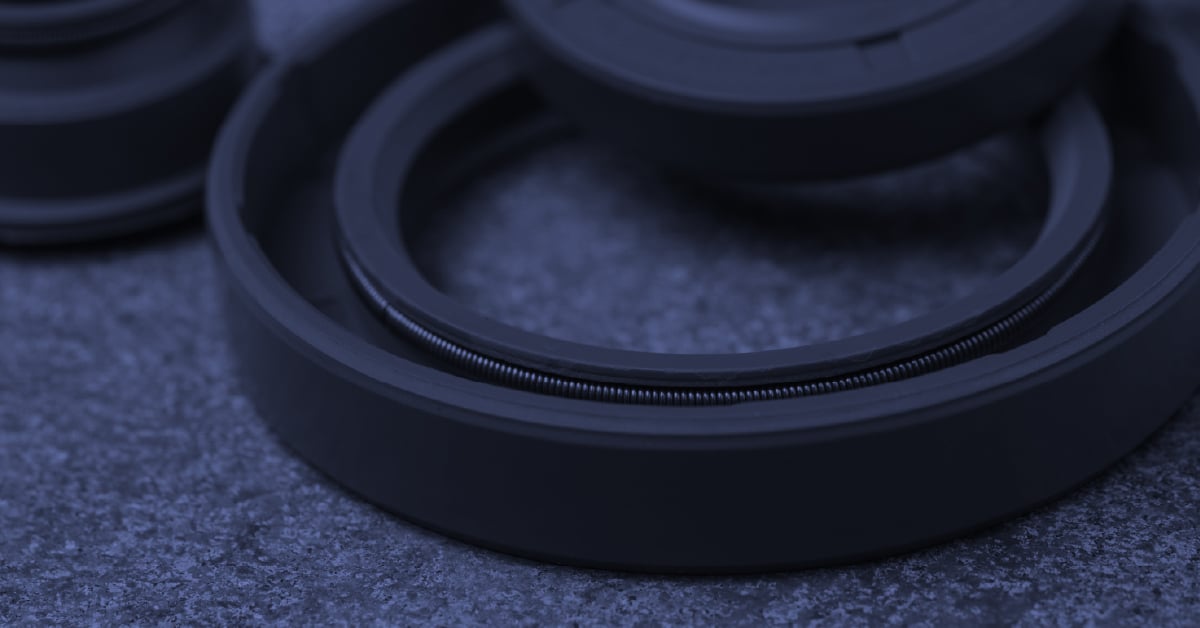Carbon Graphite Oxidation: What Is It and Why Is It Bad?
During testing, the customer noticed their existing seals were failing at high altitudes due to a significant amount of oxidation. The vendor that created the carbon graphite seals was not able to solve this oxidation issue, which ultimately led to the customer asking St. Marys Carbon for assistance.
Aerospace engineering often involves developing components or applications that are expected to work in extreme environments, such as very high altitudes as well as high temperatures and low temperatures. Most materials cannot handle these intense environments, which is why durable materials like carbon graphite are an aerospace engineer’s best friend.
However, as durable as carbon graphite is, the material does begin to degrade when exposed to extreme heat and cold due to oxidation. In this particular instance, the carbon graphite seals were failing due to a combination of engine heat and extremely cold temperatures experienced at high altitudes. Oxidation resulted in the seals losing mass, creating measurable weight loss that caused irreparable damage to the strength and durability of the parts.
Engines generate power more efficiently at higher temperatures, which is why extreme heat is preferable in the aerospace industry. However, if parts – such as the carbon graphite seals – cannot handle the heat, the engine is useless.
Solving Carbon Graphite Oxidation
Thankfully, carbon graphite is a porous material, meaning it can be impregnated or customized to better serve an application. To solve the customer’s oxidation issues, St. Marys Carbon had to create a custom carbon graphite grade that could withstand the extreme heat created by the engine.
Selecting the Ideal Aerospace Carbon Graphite Grade
St. Marys Carbon has over 400 proprietary carbon graphite grades, several of which have proven to be effective for aerospace applications. However, already knowing that oxidation would be an issue, our team decided a custom carbon graphite grade was necessary.
Our team considers a variety of options when designing a custom grade, such as carbon formulations, raw materials, impregnation, baking temperature, additives, and coatings. For this application, we started with our base aerospace grade and added in one of our high-resin treatments that would increase its temperature limitations. The result was a carbon graphite seal that could easily withstand the engine’s high temperatures.
Turnaround Time
St. Marys Carbon had to adhere to a strict schedule while developing these carbon graphite seals for the customer. Since the seals from the customer’s previous vendor had failed during testing, the rollout of the new engine couldn’t proceed until the issue was fixed. With the customer being anxious to move forward, St. Marys Carbon needed to get things right on the first try.
Thankfully, St. Marys Carbon had extensive experience with the aerospace industry as well as existing aerospace carbon graphite grades, both of which significantly sped up the development process. Additionally, our product development and operations teams are no stranger to expedited services. We rely on proven processes to complete rush orders efficiently.
All of this worked together to ensure that St. Marys Carbon was able to meet the customer’s strict turnaround time.
Aerospace Component Testing
As soon as we develop the custom carbon graphite grade, the samples are sent to the customer for testing. The customer put these samples through a rigorous testing process and found that our solution fixed the oxidation issue. No further testing or modification was necessary, so we moved forward into full production.
Carbon Graphite for Aerospace Applications
Carbon graphite is one of several materials commonly used in aerospace applications thanks to its durability, light weight, and strength. However, one of its most valuable features is its ability to be impregnated and customized to meet the demands of specific applications.
For this reason, it’s important to work with a carbon graphite manufacturer that develops its own grades and has an intimate understanding of the aerospace industry. Working with a manufacturer you can trust will save you time and money and can even ensure you never have to halt an engine rollout due to seal oxidation issues.
If your aerospace application requires carbon graphite seals, bearings, or another component, contact St. Marys Carbon today to learn about our customized product solutions, leading delivery times, and total customer service.




